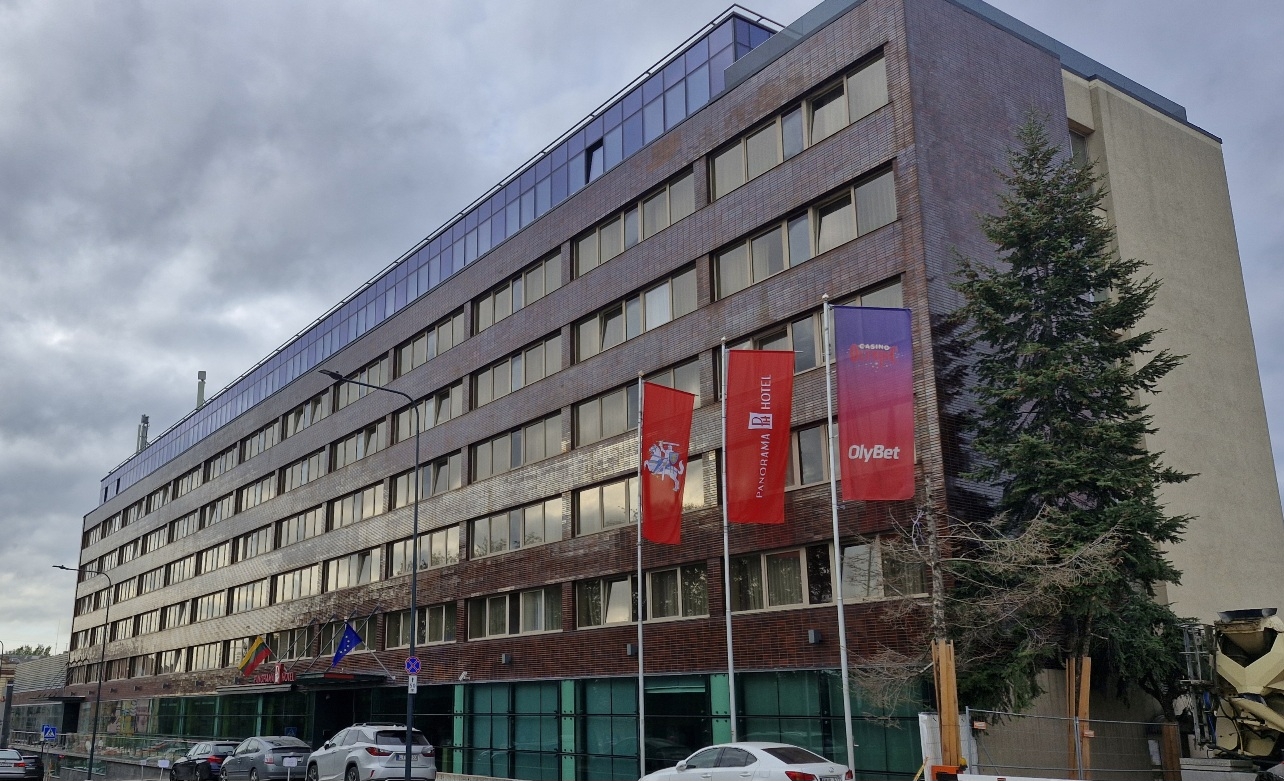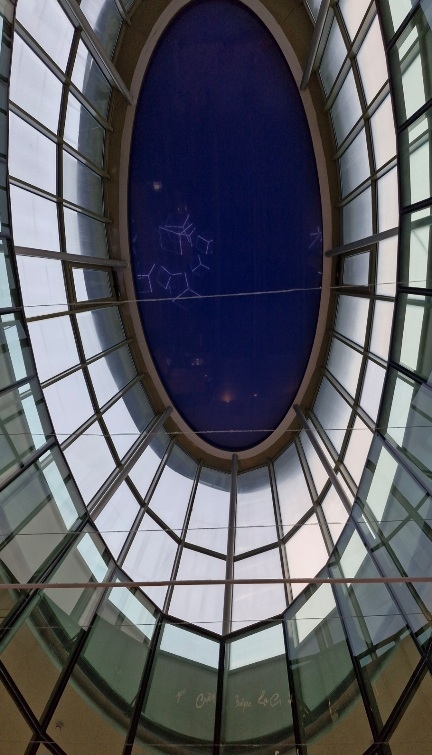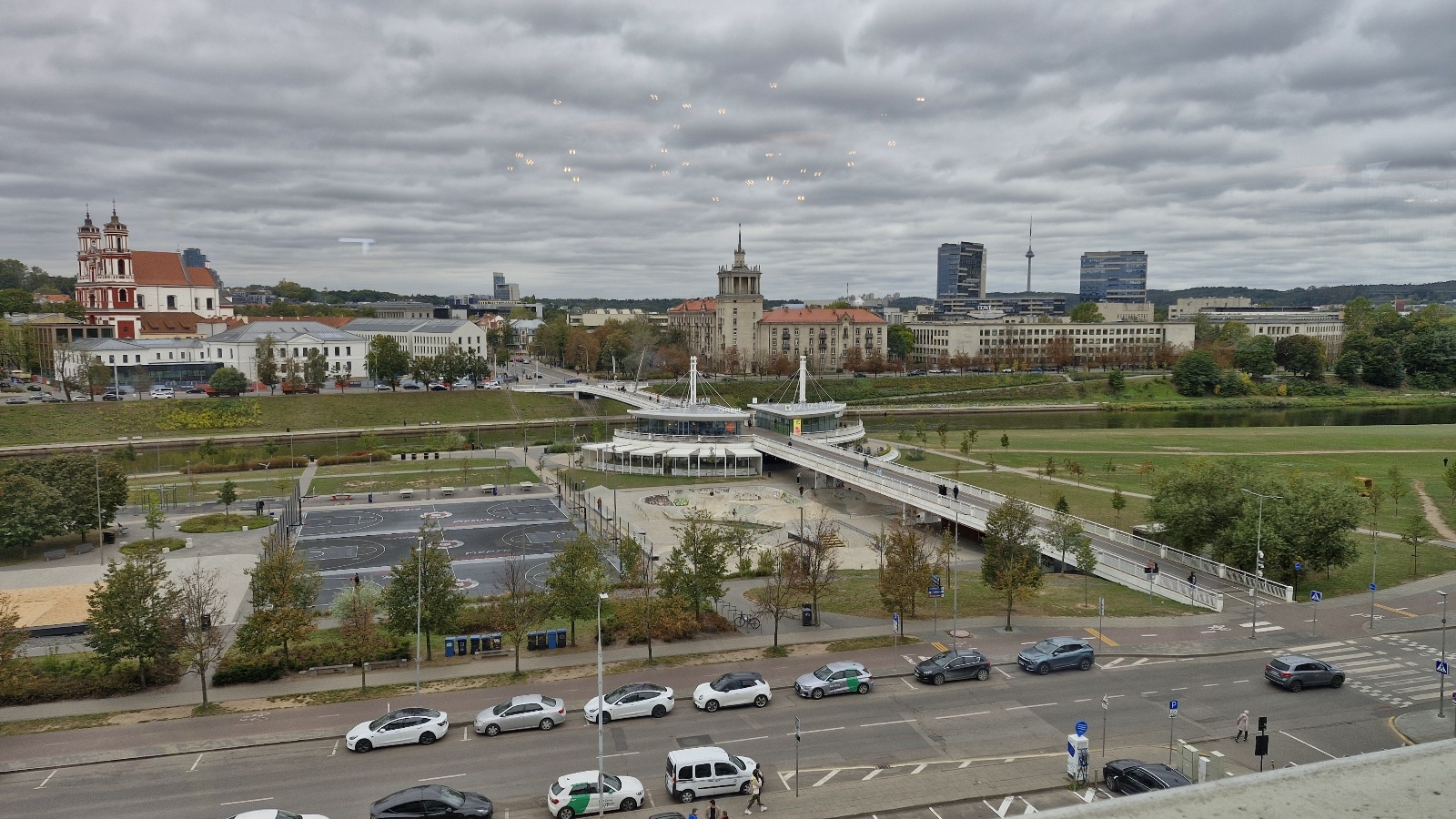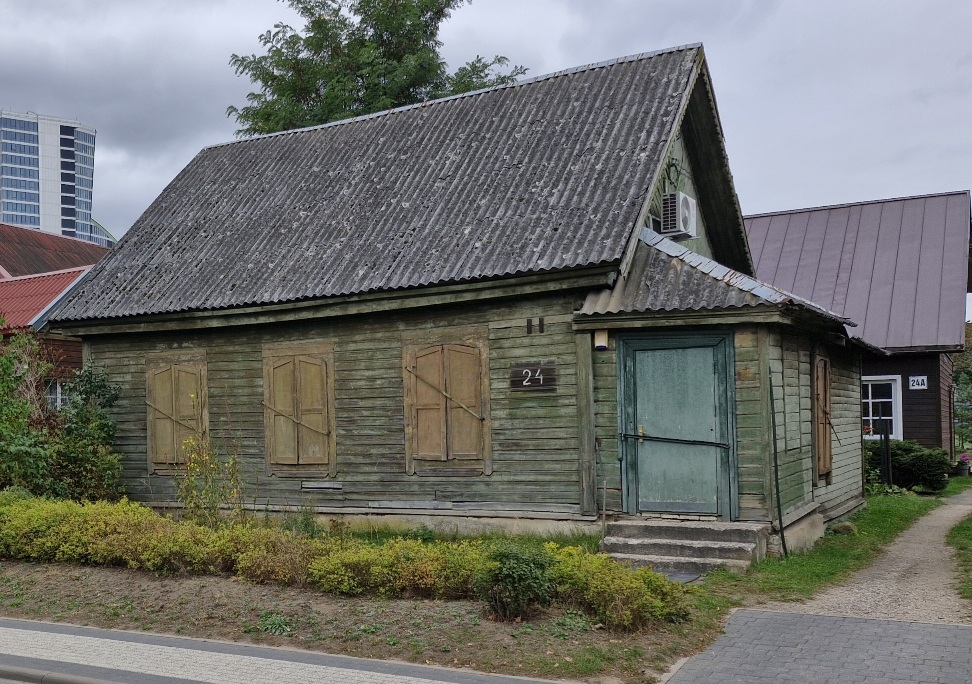33. Vilnius Part 1
There was a choice of two ways to travel from Kaunas to Vilnius, train and coach. There were regular services every hour for each one, so I didn't decide what to do till the last minute. My hotel in Kaunas was just across the street from the bus station, so that is what made the decision for me. My Interrail ticket had been fully used up at this stage anyway.
Just as with Kaunas, it was impossible to get a HomeExchange apartment in Vilnius that didn't have exhorbitant cleaning fees of €60 - €70. This must be because so many of the apartments are also let out on Airbnb.
I chose the Panorama Hotel, just a four-minute walk from the bus station instead, and got a good value breakfast-included deal for €55 a night.
The hotel looked great from the outside, I would imagine it was built in the late 70s or early 80s. This was a case of the cover looking much better than the book! After arriving from Kaunas I was able (after some gentle pleading) to get an early check-in.
While the room was very small and basic, the bed was comfortable and the hotel was very quiet at night. These were the only positives I could say about it really. Breakfast had several weird offerings (possibly wonderful, who knows?), and the least said about that experience for now the better!
I had booked a guided tour of 20th and 21st Century Vilnius. It was a shorter tour than those I had done before, and was expected to last just two hours. I felt this was perfect as sometimes the tours do drag on a little bit.
During this tour, we walked away from the Old Town to the other side of the river. The emphasis on this tour was how Lithuanian life and architecture have changed so much over the last century.
As we walked along the river. Our guide Ugna pointed out an automatic retail kiosk where there is no one working inside, it is monitored by sensors on each shelf and multiple cameras. Once you pick up an item it is registered on your bill and you just tap your debit or credit card to exit.
It is hard to believe that the building above was the first electrical power station in Vilnius, built in 1902. It is now being redeveloped into apartments.
Our guide pointed out some art that was commissioned to commemorate that Vilnius was the 2009 EU Capital of Culture. This piece, which looks like gas pipes or sewer pipes cost €100,00 at the time and is the most contentious piece of art in Lithuanian history.
On the grassy hill below the Gediminas Tower, it is possible to see another living art installation by a French artist. This one has an important purpose, it is an attempt to stop landslides on the hill which threaten the stability and future of the tower, Vilnius' most famous landmark. Different types of grasses and plants have been used to create a living piece of art depicting two hands clasped in friendship. In total 25 million euro has been spent preventing the landslides and a lot of Lithuanians are not happy with this.
Next she pointed out a huge mural (well it was hard to miss it !) of a woman in traditional Lithuanian dress, on the side of a Soviet-era apartment block. What is interesting about this, is that it was painted by a robot, and up close it is possible to see the vertical lines of the paint.
Soviet Quarter
On we walked towards a typical Soviet urban complex, now a protected structure. It is an example of the cheap, concrete monotonous, mass-produced buildings that were ubiquitous across the Soviet Union. The contrast between this building and the new glass skyscrapers of the 'new city centre' is clear.
Here is another such building, but one that has been refurbished.
They illustrate the respect for the masses that typified Soviet rule, where any attempt at individualism, personality or creativity was frowned on.
Ugna told a story of her grandparents waiting for over a year to get a table booking for the only pizzeria in the whole of Lithuania. The building is no longer there, but she pointed out where it stood. The pizza, when they got it (one between two people) had one olive on it, sliced in three !
On another street she showed us where the only bar in Vilnius with draft beer stood. Obviously this would have made it very popular, so there was always a crowd there. However it wasn't that the beer was particularly good, it was because the noise of conversation was so loud that people felt if was the only place in Vilnius where they could speak freely without worrying if the KGB was listening.
This was the biggest Soviet department store in Lithuania. It still has the same name - CUP - meaning Central Universal Shop in Russian. In theory it sold everything, but in practice the shelves were mostly empty. Ugna's grandfather queued here for five hours for bananas once and when he finally got to the front of the line, there were no bananas left.
Inside the store there is an impressive dome, very clearly from the 70s.
It is now a vibrant shopping centre with great views over the city from the top floor restaurant.
I returned there after the tour to have lunch and this was the view from my seat. As can be seen, Vilnius is very green with a huge number of public parks and walks.
Next is an example of Stalinistic ‘Birthday Cake’ architecture. It is an apartment block which was built solely for scientists.
Science was promoted heavily and successful scientists had higher wages than any other workers, and luxury living conditions. So much so, that the following was often whispered out of KGB earshot - "everybody is equal but scientists are more equal than others".
Here is a more recent example of Soviet architecture. This hotel (now a Radisson Blu) was built by the Soviet state in the early 70s. It was an ‘Intourist’ hotel (short for international tourist) called Lietuva or Lithuania. Every Soviet capital city had one, so there are almost identical ones in Riga and Tallinn.
Each hotel had a completely separate floor for KGB officials. It was always floor 13. This floor never appeared in the hotel lifts and had its own access. Guests were led to believe that the reason there was no floor 13 in the lifts was that the Soviets thought it was unlucky.
Here is a typical Soviet-built apartment block. There are many of these still in use and are cheaper to rent than newly built apartments as the insulation is so poor.
'New City Centre'
We then left the protected Soviet quarter behind and made the short walk to the ‘new city centre’. This has Europe Square at its heart, named after the start of Lithuanian EU membership in 2004.
On the left in the photo above is Europe Tower, the tallest building in the Baltics, measuring 148m. The Lithuanians are very proud of this achievement.
It is the current business centre of the city with many international banks and organisations having headquarters here. It was no surprise to me when the tour guide told us that Lithuania is currently the number one fastest growing economy in the world, and has been for a decade.
The offices of the city council are in this new quarter and at the top of the council tower there is a large banner, sanctioned by the council, sending the message loud and clear that the city does not support the Russian President.
There is apparently great friendly rivalry between the three Baltic neighbours, especially in basketball, and they never can resist some one-upmanship where possible.
So it was with great pride that Ugna informed us that the population of Vilnius would definitely overtake that of Riga next year to become the biggest city in the Baltics. The population of Vilnius is currently 605,255, while that of Riga is 605,258! As 20% of the city's population is made up of immigrants and refugees, and as this figure is rising, that total number is expected to be well beaten next year. This has been the secret dream of Vilnius residents for decades.
Šnipiškės
The final part of the tour was the most surprising. Ugna called it Vilnius’ best kept secret. It doesn’t really feature in any of the bus tours. Šnipiškės is better known as the Wooden Houses of Vilnius. Surprisingly, this unique area is just metres away from soaring skyscrapers, in the most modern part of the city.
During the Soviet redevelopment of Vilnius, Šnipiškės was somehow forgotten, so here you can still witness how a 19th-century wooden suburb of Vilnius looked.
It consists of over 300 houses, in a green woodland area, some dating back 100 years, some 200, with some even 300 years old.
It is now a protected area. The houses are all owner-occupied and most have been in the same families for generations. Apparently the owners all speak their own dialect of Lithuanian.
The local residents were very friendly and came out to greet us.
I spotted this car in one of the gardens and the home owner insisted that I should come into the garden to get a proper photo.
The houses are in various states of (dis)repair and rarely if ever come up for sale. When they do they are in high demand. The house above is currently on the market for €300,000, a huge sum of money in a city where the average cost of a two-roomed apartment is €60,000.
This leads to the situation where two next door neighbours are living in completely different conditions. The house on the left (above) has a blue fire-hydrant beside it, this shows that it has no running water. The outside toilet can be seen behind the house. Next door, the house has been renovated and the owner drives a BMW with a customised number plate.
Speaking of which, these are becoming very popular in Lithuania and it seems you can just choose whatever name or number you wish. I spotted the following car while out walking and couldn't resist taking a photo.
Having spent the day in the city, I didn't feel like travelling too far for dinner, so I used Google to see what restaurants were within walking distance. The most interesting option was a Georgian restaurant which had excellent reviews and a score of 4.8. As I had never tasted Georgian food I decided this was the one.
Chačapuri Bistro was very busy when I arrived. I ordered Georgian roast chicken with a Georgian sauce, salad and chips. I also had a Georgian beer. Everything was tasty but there was nothing outstanding about it and I definitely didn't think it merited an average review score of 4.8.




























Comments
Post a Comment